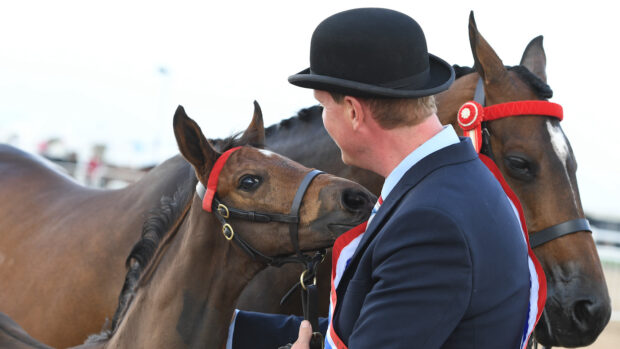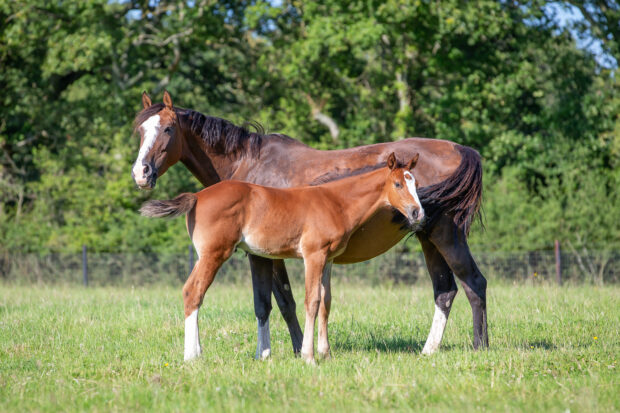More articles on broodmares
Discuss breeding in the Horse & Hound forum
Mares do not naturally experience heat cycles (oestrus) during the winter and early spring months, although some mares will have a cycle all year round. In winter, a mare’s reproductive system goes into a rest period, known as anoestrus.
After this winter inactivity, the cycle usually begins again in spring. The mare does not suddenly begin to cycle regularly, but has a “transitional phase” when the length is variable. Once the mare is truly in the breeding season, her oestrus cycles last about 22 days.
When nature has its own way, the stimulus to “switch on” the mare to her cycle depends on the amount of daylight – the most important influence on mare reproductive performance. It is said that a mare is at her most fertile on Midsummer Day.
This effect of season on reproduction results in foals being born in the spring and early summer – when environmental conditions should be best for foal survival. Therefore, the natural breeding season of the horse is from May until August – and this is when highest pregnancy rates are likely to occur.
Birth dates
Unfortunatly, man has superimposed his ideas of when mares should foal on this natural pattern. Since the early 19th century, when 1 January was declared the official date of birth for thoroughbred foals, irrespective of their actual birth dates, breeders have had problems attempting to put mares in-foal in the winter and early spring.
For some breeds, notably the thoroughbred, an operational breeding season exists — 15 February until the first week of July. This “man-made” season means that many breeders try to get mares in-foal from the middle of February onwards.
This means that a foal born on 1 February and one born on August would both be considered one year old on the following January, despite a six months’ difference in true age.
Cycle manipulation
Light can bring the mare to cycle earlier. Putting a mare “under lights” is popular among breeders and means providing extra light at the end of the day. It is also important that the mares are in good condition, brought in and well fed. Hormonal drugs are also prescribed.
Experience has shown that 16 hours of light stimulus (artificial and natural) is adequate. This means providing light from 7am until 11pm. The extra light is best added at the end of the natural daylight period and must be bright enough – a 200 watt clear bulb in the middle of a 4m x 4m box is best. A strip light should be 1.30m in length (40 watt). Take care to eliminate shadows, as they can prevent a good response.
Two important points are:
- Extra lighting must be started early enough. Generally, a minimum of eight-10 weeks is needed and mares should be exposed to the lighting system by December. This should mean that they will begin to cycle normally by 15 February. You cannot decide to put a mare under lights and expect her to begin her cycle a week later. Forward planning is essential.
- Mares should be in good body condition before they are given extra lighting, which may mean extra feeding.
Sometimes, vets may prescribe hormonal drugs (progesterone), which affect the mare’s cycle. Mares coming to the end of a two-month artificial light programme may be given 10-15 days’ treatment to give them an extra “boost” to begin their cycle. For it to work properly, it is important that the hormonal drugs are given in their feed every day. Most horses eat the drug with no problem.
Looking for more articles on broodmares?
Discuss breeding in the Horse & Hound forum now



